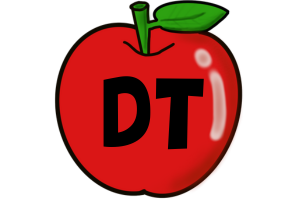In an age where educators are striving to create an enriching academic environment, the focus often shifts to modern pedagogies, innovative teaching methodologies, and the use of technology in classrooms. While these elements are undeniably vital, it’s essential not to overlook the basic principles of human interaction that can significantly impact students’ learning experiences. One such practice is the morning greetings ritual.

Over the years, this customary routine has evolved into an effective pedagogical tool, influencing classroom dynamics positively. Rooted in the simple act of acknowledging each student at the start of the day, morning greetings set the tone for a constructive and supportive learning environment. This routine extends far beyond a mere hello; it is a powerful method to establish a positive classroom culture, foster students’ social skills, and create a sense of belonging.
While its implementation may seem straightforward, the layers of benefits that morning greetings offer require careful examination. This comprehensive guide aims to shed light on the importance of this often underappreciated routine, offering insights backed by academic research, anecdotal evidence, practical strategies, and testimonials from educators worldwide.
Expanding the Repertoire: Ten Engaging Morning Greetings for Students
Every classroom is unique, with different age groups, personality types, and cultural backgrounds. Therefore, diversifying the morning greetings to cater to these differences can significantly enhance their effectiveness. Here are ten creative ways to conduct morning greetings:
Handshake and Personal Compliment: This method goes beyond a traditional handshake. Complimenting students individually while greeting them fosters self-esteem and promotes respect and kindness. It’s an opportunity to highlight their uniqueness and show them that they’re valued as individuals.
High Five: A high five greeting introduces an element of fun and physical interaction, allowing students to start their day on an energetic note. It’s particularly beneficial for those who may not be morning people, injecting a sense of enthusiasm.
Fist Bump: This greeting type, often deemed cool by students, can serve as an effective ice breaker. The casual nature of a fist bump fosters an environment of comfort and familiarity, making students feel more at ease.
Hula Hoop Pass: This group greeting activity involves passing a hula hoop around the circle without breaking the chain of hands. It encourages teamwork, cooperation, and creates a sense of togetherness, laying the foundation for a collaborative learning environment.
‘Good Morning’ in Different Languages: Greeting students in various languages broadens their cultural understanding and global awareness. It promotes an inclusive classroom environment, sparking curiosity about different cultures and languages.
Thumbs-Up Greeting: A simple thumbs-up promotes a positive mindset, boosts morale, and encourages students to start their day on a positive note.
Classroom Wave: This greeting method infuses the classroom with energy, unifying the students, and serving as an effective wake-up call for those still transitioning from sleep to school mode.
Name Rhyme Greeting: This technique involves creating a simple rhyme with each student’s name, making the greeting fun and easing any morning tension or anxiety.
Weather Report Greeting: In this greeting, each student shares their “inner weather” or how they’re feeling that particular morning. This exercise promotes emotional awareness and empathy among students.
Dance Move Greeting: Each student can greet the class by showing a favorite dance move. This greeting encourages self-expression, creativity, and brings a high energy level to the classroom.
A Deep Dive into the Impact of Morning Greetings on Classroom Dynamics
Morning greetings have a profound impact on classroom dynamics. A study conducted by Brown University reveals that students in classrooms where morning greetings are practiced tend to display better social skills, show increased participation in classroom activities, and exhibit enhanced academic performance. These benefits are seen across different age groups and socio-cultural backgrounds, pointing towards the universal effectiveness of this practice.
Morning greetings create a safe and welcoming learning environment. When each student is greeted individually, they feel recognized and valued. This acknowledgment can significantly boost students’ self-esteem, making them more confident learners.
Moreover, these greetings provide students with a consistent, predictable start to their school day, which can be particularly beneficial for students who may have unstable home environments. The security of knowing what to expect when they walk into the classroom can be comforting and reassuring.
Perspectives from Educators: The Transformative Power of Morning Greetings
Educators worldwide have shared how incorporating morning greetings in their classrooms has changed their teaching experience and enhanced their students’ learning. From handling initial hesitancy to witnessing a transformation in classroom dynamics, their experiences provide valuable insights and reaffirm the effectiveness of this practice.
Mrs. Jacobs, a third-grade teacher from Washington, D.C., shares, “The introduction of morning greetings in my class has been transformative. My students now look forward to starting their day, and the energy in my classroom has become more positive and collaborative.”
Mr. Silva, a high school teacher from São Paulo, Brazil, affirms, “The ritual of morning greetings helps break the ice, especially with teenagers who can be a bit reserved. It also offers a chance to connect with each student and to understand their emotional state, which is incredibly valuable.”
Conclusion: Harnessing the Power of a Warm Greeting to Start the Day
While morning greetings in the classroom might seem like a small gesture, the impact they can create is profound and far-reaching. This practice has the potential to transform the classroom environment, foster meaningful connections, and create a sense of belonging among students.
As educators embark on the journey of integrating morning greetings in their classrooms, they must remember that the ultimate goal is to create an atmosphere where each student feels acknowledged, valued, and excited to start their day. Whether it’s through a simple handshake, a personalized compliment, or a fun group activity, the potential of morning greetings is boundless and the results, incredibly rewarding.
Further Reading: (These are not affiliate links)
- “Building Classroom Relationships” by Robert J. Marzano and Debra J. Pickering.
- “Positive Classroom Management Strategies” by Natalie Regier.
- “Culturally Responsive Teaching” by Geneva Gay.
- “The Heart of Learning and Teaching: Compassion, Resiliency, and Academic Success” by Ray Wolpow et al.
Given the weight of evidence supporting the benefits of morning greetings, it’s an avenue worth exploring for any educator seeking to foster a more inclusive, supportive, and positive learning environment. The simplicity of its implementation combined with the depth of its impact makes it an indispensable tool in modern education.


